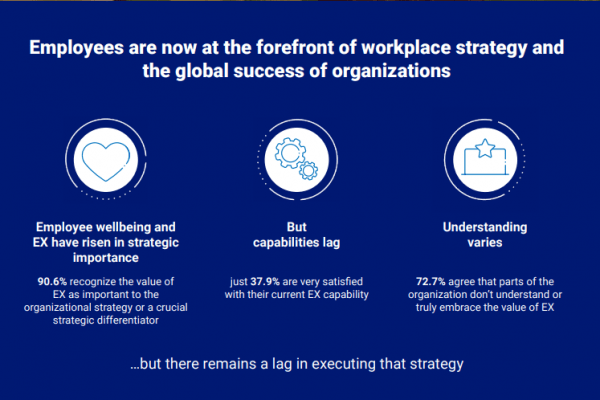Report: Company leaders and employees are operating under a striking disconnect
As the nature of work continues to change, clear internal comms strategies have never been more important.

The progress made by corporate leaders in adjusting to pandemic-related challenges may not be quite as rosy as they think.
A huge disconnect appears to exist between the views of executives and those of employees regarding the future of work, according to a new “Global Workplace Report” released by NTT.
The study found that the top four strategies companies currently use to adjust to new employee needs include flexible hours, wellness, remote/hybrid work and an improved work environment.

Several key findings from the survey include:
- Globally, 93.2% of executives believe they have a sustainable workplace essential to attracting and retaining talent, yet only 23% of employees stated they were “very happy” working for their company.
- Thirty-eight percent of employees felt their employer values their health and well-being.
- In addition, 63% of chief human resource officers said they believe that employees’ overall well-being has declined since the pandemic began.
- When it comes to work arrangements, employees are evenly split in their preferences, with 30% desiring fully remote work, 30% choosing hybrid and 39% favoring an in-office setting.
- Fifty-eight percent of employees claimed working from home can be difficult.
- Two-thirds of workers surveyed indicated they don’t possess the tools and technology to effectively work from home, despite 55% of management feeling “strongly satisfied” that their company is ready and able for the hybrid work model.
Given the challenges that workers face working remotely, it’s no surprise that enhanced technology has been identified as one of the most vital tools for new workplace strategies.
Are leaders listening?
Core to employee engagement in this new reality is employees’ feeling heard. Leaders should also consider people’s well-being and work to individualize solutions.
We’ve heard a lot about the importance of feeling heard, but its importance can’t be underestimated. Valuable, actionable listening tactics include regular touch points and one-on-ones, as well as consistent communication channels that are easy to access and navigate.
In addition, leaders should be sure that they are regularly evaluating their communication efforts to ensure they’re working for employees.
In what ways are you working to listen to your employees?
David Grossman is CEO of The Grossman Group. A version of this article first appeared on his blog.






